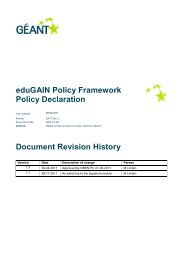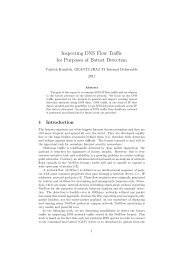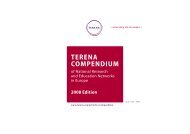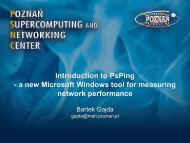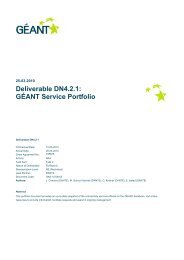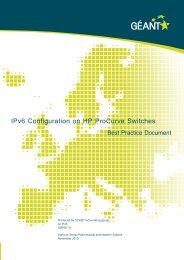Guide to configuring eduroam using a Cisco wireless controller Best ...
Guide to configuring eduroam using a Cisco wireless controller Best ...
Guide to configuring eduroam using a Cisco wireless controller Best ...
Create successful ePaper yourself
Turn your PDF publications into a flip-book with our unique Google optimized e-Paper software.
Step 5: Network Policies<br />
Remote Access Policies handle the local authentication and can for example grant different users<br />
access <strong>to</strong> different networks: some <strong>to</strong> the guest network, some <strong>to</strong> VLAN 10, VLAN 12, etc.<br />
• Right-click on “Network Policies” and click on “New”<br />
• Choose descriptive names for policies, such as “Employees with Guest network”, “Students in<br />
VLAN10”, etc.<br />
• Click on “Next”<br />
• “Conditions” are the criteria which determine whether a user shall use this policy or try the next.<br />
• Click on “Add”<br />
• The criteria which should be checked for each Network Policy are up <strong>to</strong> the system opera<strong>to</strong>rs and<br />
depend <strong>to</strong> a large extent on how allocation is <strong>to</strong> take place.<br />
Some standard options may be:<br />
“User Groups”, adding “Domain Users” and for example “Quarantine” or “WiFi VLAN 10” or other groups<br />
from AD. NB: The AD groups must be created first!<br />
• When the criteria have been specified, click on “Next”, select “Access granted” and click on “Next”<br />
o Network Policies may also be created which deny access <strong>to</strong> users. For example, all users<br />
belonging <strong>to</strong> the security group “Wireless Access Denied” will be assigned the criterion “Access<br />
denied”. But remember: the policies are handled in a predetermined order and users will obtain<br />
access <strong>to</strong> the first alternative which is appropriate. Hence it may be advisable <strong>to</strong> specify all<br />
policies which use “Access denied” first.<br />
• Click on “Add”, add “Microsoft: Protected EAP (PEAP)” and click on “OK”<br />
• Ensure that “Microsoft Encrypted Authentication version 2 (MS-CHAP v2)” is ticked.<br />
o The remainder of the selections are optional.<br />
• Click on “Next”<br />
• Note the NAS Port Type<br />
• Select “Ethernet”, “Wireless – IEEE 802.11” and “Wireless – Other”<br />
• Click on “Next”, then “Next” again, followed by “Finish”<br />
Do this for each Network Policy that is needed.<br />
53



